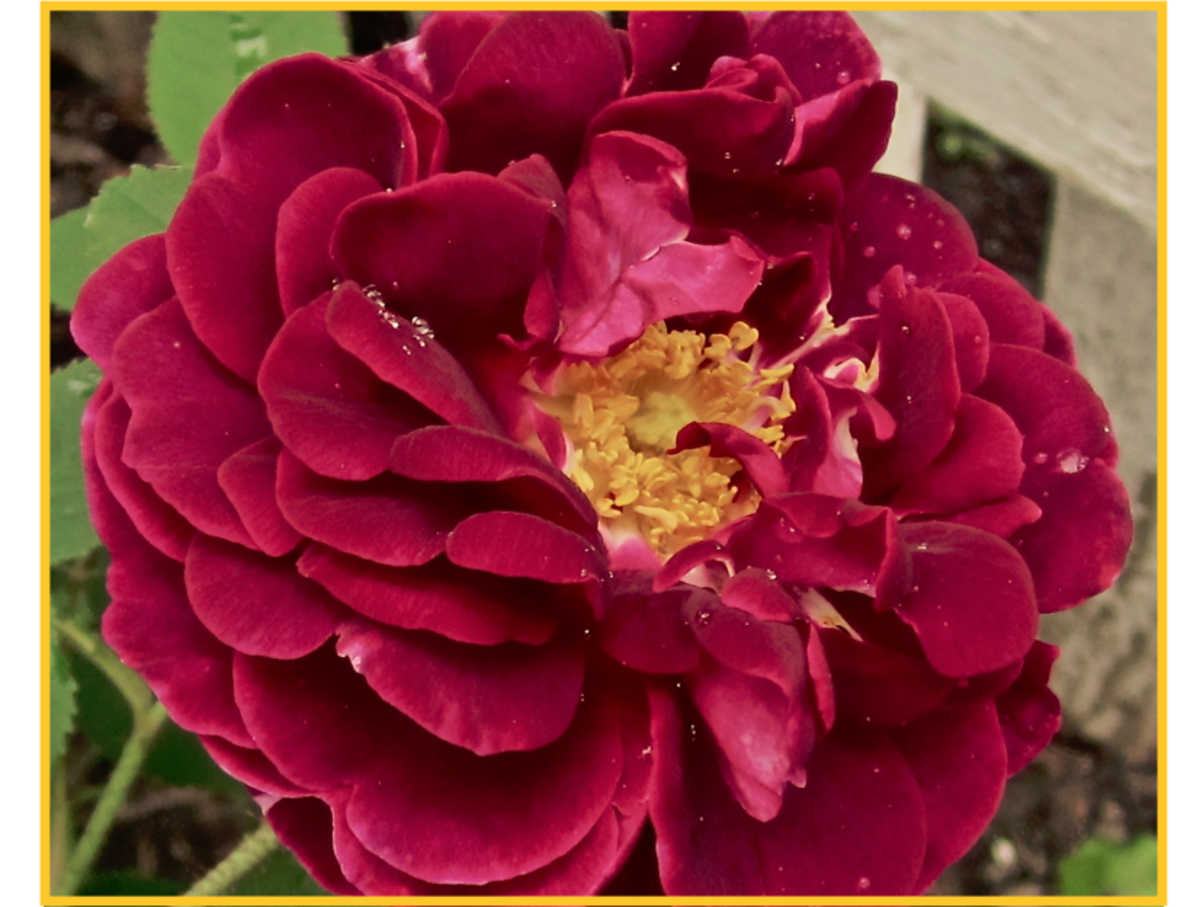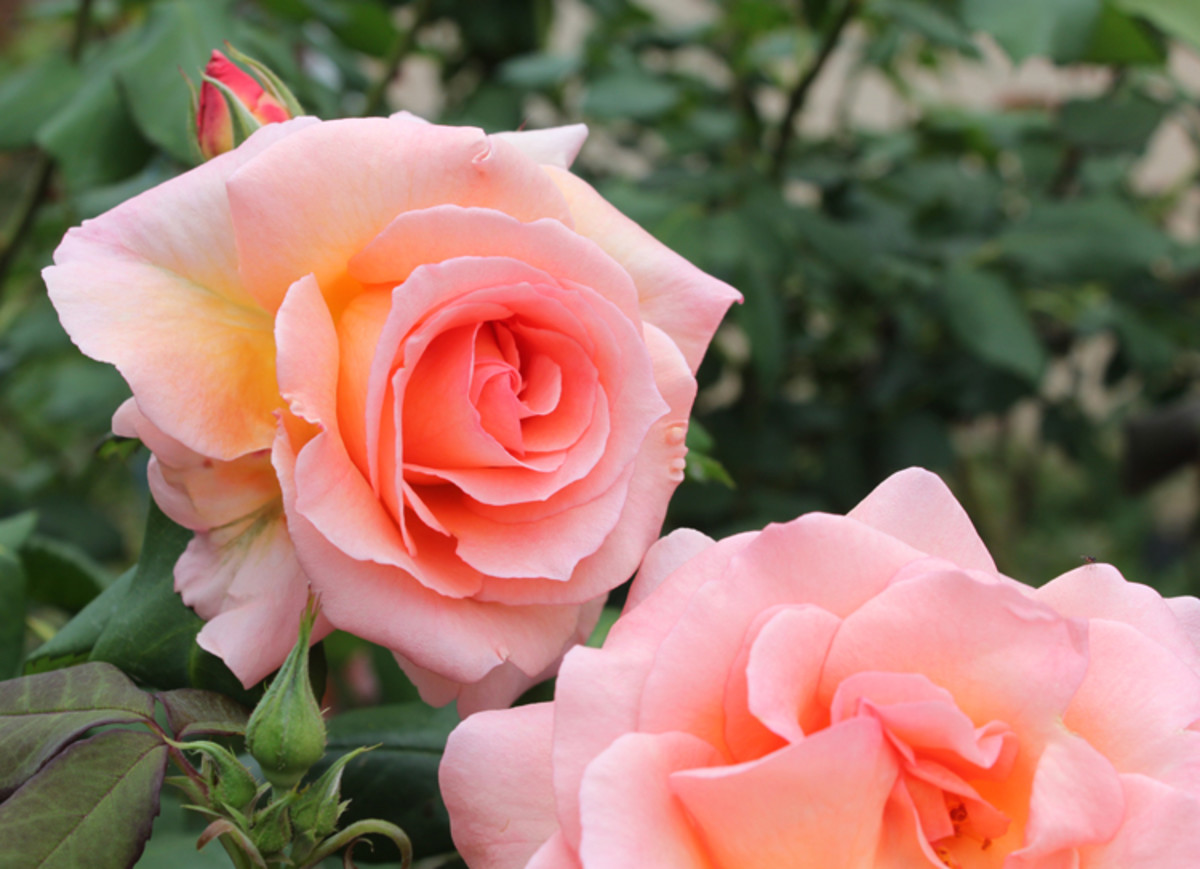How to Select Roses for your Garden

No florist’s rose can ever match one you grow yourself. If you want beautiful blooms, and wonderful fragrance, the best are the ones you grow.
Many people are overwhelmed by the thought of growing roses because they have heard that can be a lot of work. That can be true, but not always.
The first step in the process is to select and purchase the kinds of roses you want. The first thing you have to consider is if you have the right place for them. Roses must have at least six hours of full sun each day, and more is better. If you can’t provide that, you will never have decent blooms.
You have to decide what kind of roses you want and why are you are growing them. It is not possible to cover even a small portion of the kinds available in one short article. So, only the main types are discussed.
If you simply want a blooming bush in your landscape scene, one of the hardier heirloom roses might be best for you. If plant it and forget it is your style, the older heirloom varieties, such as moss roses, or rugosa bushes are almost carefree, bloom profusely, and have a wonderful aroma. Their only drawback is that they only bloom once per year. Many of the older varieties are also much cold hardier than the more modern hybrid teas or floribundas.
Knowing your climate and what roses will tolerate it matters a lot. If you live in Northern Minnesota, or perhaps the colder parts of Canada, your selection of varieties may be quite limited. In those areas, some people even grow them as annuals, and replace the bushes once a year. Some roses simply don’t like really hot climates like Arizona, or the Southern Gulf Coast areas. Any variety with a large petal count, like 40-50 petals per bloom won’t perform well in cool summer areas like the Pacific Northwest, or Northern California.
Before making any purchase of rose bushes, check to see what type of climate a particular variety likes. This information is readily available in garden catalogs or online and will spare you a lot of disappointment. Nothing is more frustrating than to nurse a bush along only to find it simply won’t thrive where you live.
And you need to decide if you are going to have only one or two bushes, or be a more serious rose gardener, and create a bed. If you are serious, then you want to do your homework before you buy any bushes.
It pays to read up on the particular variety you think you want. Do you care about fragrance? Does disease resistance matter to you? Do you want a tried and true variety? What colors please you?
If you don’t mind the extra effort, and really want good cut flowers, the more modern hybrid teas, grandiflora, floribunda, Austin English roses are going to give you those incredible blooms for arrangements.
These designations are a way to characterize the kinds of blooms and plants you can expect. Hybrid teas are usually reach about 5 feet in height, and produce one bloom to a stem. These are closest in appearance to the single stemmed roses florists sell by the dozen. Probably the most famous hybrid tea is “Peace”, which is as popular today as it was at the time of its introduction just after World War II. Grandifloras are tall roses, often 6 feet or more, and produce their blooms in clusters. The most famous of the grandifloras is “Queen Elizabeth”, and unpruned, it will easily reach 8 feet. Florbundas are the short fellows on the list, often not over 3 feet and also produce their blooms in clusters. The rose “Iceberg” is probably one of the most famous of this type. Austin English roses are hybrids crossing a modern variety with an heirloom rose, with the best attributes of both combined. They have old rose vigor, perfume, and bloom form, but they bloom continuously like the modern hybrids. One of the best of the Austin English roses is Abraham Darby, a mix of pink, peach and yellow with heavenly scent.
A good place to start researching varieties is at the American Rose Society. They give roses rankings from 10, which is perfect, to 1, which is worth avoiding at all costs. A rose with an 8+ rating is usually a safe bet in terms of performance, productiveness, and overall vigor. Roses ranked under 7 are likely to be a disappointment. Each year, the Society awards an “All American Rose” designation for a few new good roses. But that alone is not as good an indicator as a long standing track record. There are roses from past years that were All America selections that are hardly remembered anymore. Double Delight, won the award in the 1980’s, and is still a much sought after variety. That same decade, “Sweet Surrender” won, and has all but disappeared from commerce. There are other varieties that never got that award, that are still very much valued and around in commerce. Gold Medal is a good example of a rose which is more valued today, than at the time other roses won out against it in the 1980’s. If you don’t have a lot of extra gardening space for experiments, it is better to stay with the tried and true varieties.
Once I bought an All American winner the year it came out and it turned out to have really unattractive blooms and few of them (which may have been a blessing). The next year I had pull it out, discard it, and start over with that space in my garden. I have yet to ever be disappointed in the roses that have been highly touted for years.
Bushes bought at nurseries are usually in 5 gallon pots. All you have to do with them is remove them from the pot, and plant them in the prepared bed. Mail order bushes are shipped bare root, at the right time of year for planting in your climate. Once they arrive, the roots must be put into water immediately, and kept there until planting, which should not be more than a few days after arrival.
Never, ever buy cheap wax covered bushes at grocery nurseries or home improvement stores. They have not been well grown, or cared for, and rarely recover from being suffocated by the wax. If you are going to the trouble to plant something that will last for years, spend the extra money to get good bushes from reputable nurseries, or from the best mail order companies. The extra cost more than pays for itself over time. They will only cost around $15.00 to $30.00 per bush and that is really not expensive for something that will last for years.
Even a part time rose grower is better off doing a bit of homework before buying. For those who are more serious, it is absolutely necessary. If the right varieties are selected, the chance that you will be pleased with the results is much higher. There is nothing so frustrating as buying a new bush, pruning, watering, feeding and coddling it only to find that the blooms are not to your liking or it simply will not perform in your climate.
If you are serious about growing your own roses, take the time to learn about varieties and choose what will work for you. The result will be bouquets of flowers you love.
A few suggestions from my personal favorites are below:
For Fragrance:
Double Delight-Hybrid tea with vibrant cream colored blossoms edged in strawberry red
Abraham Darby- English Rose pink/peach/yellow mix with old rose full bloom form
Just Joey-Hybrid tea with huge apricot blooms fading to buff as they mature
Dainty Bess- Hybrid Tea-Single petaled pink blooms with delicious fragrance.
Gruss an Achen- Floribunda with soft pink old rose form and strong, sweet scent.
By Color:
Red
Ingrid Bergman-Hybrid tea true red with 35 petals
L.D. Braithwaite-Austin English rose with old rose form
Precious Platinum-Hybrid tea-Large blossoms in cardinal red, velvety texture
Pink
Bewitched- Hybrid tea-older variety but produces more phlox pink blooms than almost any other bush.
White Delight- Hybrid tea with pale, pastel pink long stemmed blooms
Fame- Deep pink Grandiflora with outstanding vase life
Tournament of Roses- time tested grandiflora with clusters of pink blooms that look like fine china.
Maggie Barry- Hybrid tea a mix of coral and deep pink with steady flush of large blooms
Pristine-Hybrid tea with very pale pink blooms tipped in darker pink. Huge blooms
Yellow
New Day-Older variety but has the clearest yellow blooms of any hybrid tea
Gold Medal- Grandiflora with pale yellow blossoms tinged in pink in cooler weather
Peace-Perhaps the best loved hybrid tea of all time. Yellow blooms have pink edges and huge blooms.
Summer Fashion-Floribunda with creamy yellow blooms with pink on outer side of petals. Shorter stems but many clusters
White
Iceberg-Floribunda that stays covered in pure white clusters of blooms
Sally Holmes-Shrub rose with some pink edging, but mostly white. Single petaled but prolific
Crystalline-Hybrid tea with long stemmed, clear white, full blooms
Fair Bianca-Austin English rose. Old heirloom formed clear white blooms with heavy full petals.







